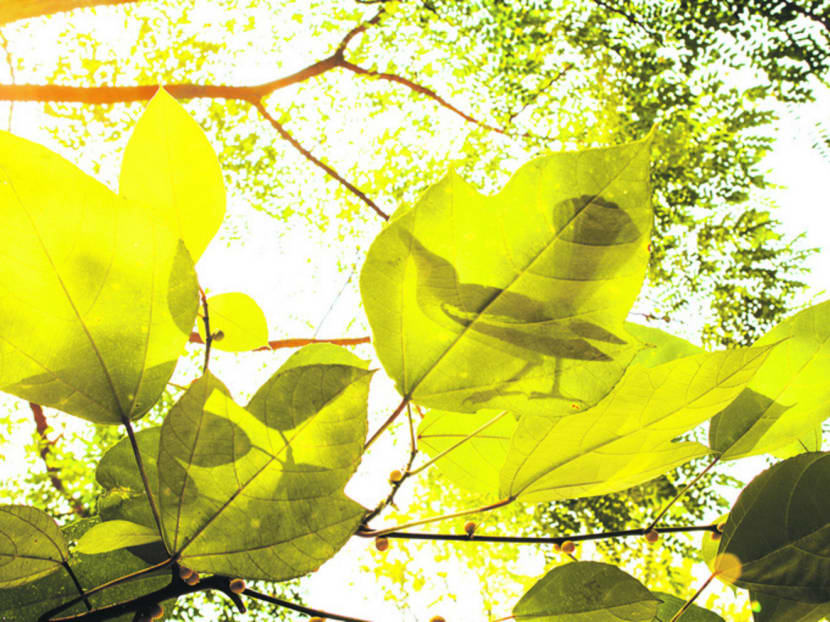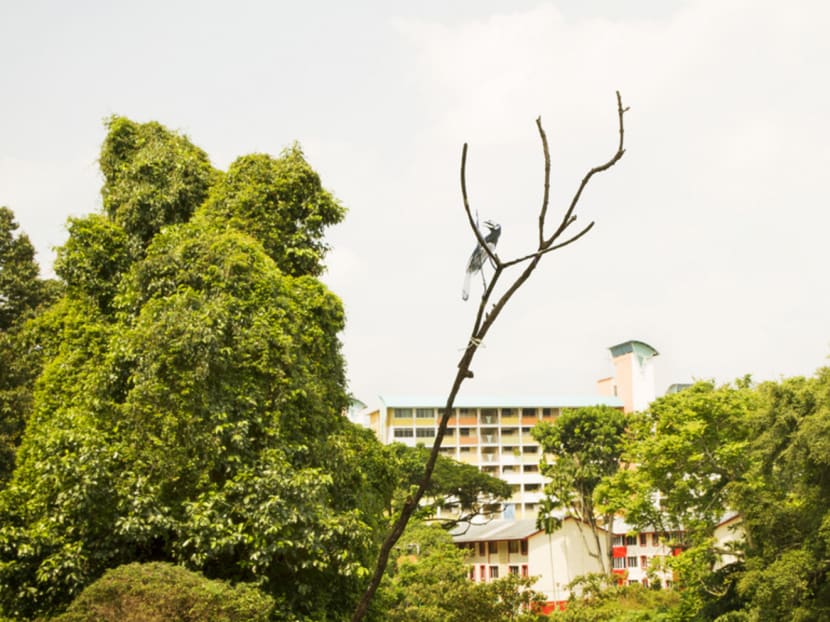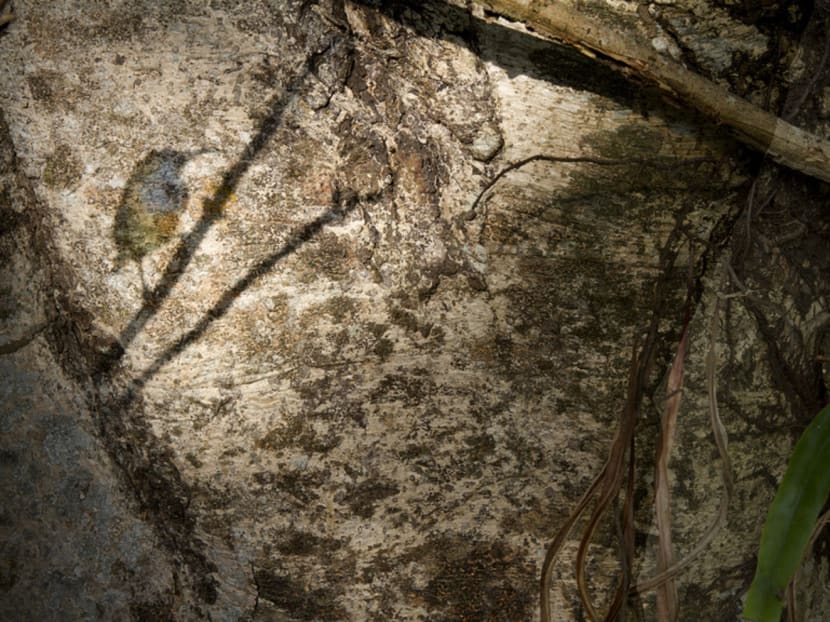Bird’s eye view: Tanglin Halt’s feathered wildlife the subject of a show
For the past six years, artist Lucy Davis has lived in Wessex Estate right next to the rail tracks, where she would regularly hear or catch a glimpse of a whole host of birds, from violet cuckoos and oriental magpie robins to eagles, kites and blue-crowned hanging parrots.




For the past six years, artist Lucy Davis has lived in Wessex Estate right next to the rail tracks, where she would regularly hear or catch a glimpse of a whole host of birds, from violet cuckoos and oriental magpie robins to eagles, kites and blue-crowned hanging parrots.
“The day before yesterday, I had a blue-winged pitta visit our garden,” she recalled during our interview. “This guy flies down from Indochine, rests in Singapore, goes to Indonesia and may even end up in Australia.”
In fact, the area along the former Malaysian railway tracks between Wessex, Alexandra and Tanglin Halt is a kind of bird central for both local and migrant feathered folk — around 105 species have been spotted there, according to a survey done by Davis and her collaborators under the Migrant Ecologies Project, together with the Nature Society Of Singapore Bird Group.
With the impending development plans of the area due to One North, Mediapolis and the proposed Rail Corridor by the Urban Redevelopment Authority, however, the future of the wildlife in the area is now a huge question mark.
The looming changes in the area form the backdrop for the M1 Singapore Fringe Festival multimedia exhibition Railtrack Songmaps. Conceptualised by Davis, and done with the help of artists and scientists, including sound artist Zai Tang, video artist Kee Ya Ting, biologist David Tan, the show aims to paint a layered portrait of Tanglin Halt’s community of people and birds.
“It’s about the relationship between humans and birds in this particular area, with older-generation HDB flats running alongside the railtracks. A number of residents has already had to move out and other blocks are going soon, so there’s the context of threatened nature and culture,” said Davis. “But we didn’t want it to be a ‘sad’ project — it’s more of this treasure trove of possibilities in this area. The experience I hope will be one that is quite ephemeral and magical — just like when a bird comes into your life for a couple of seconds and leaves again.”
Railtrack Songmaps comprises a few elements, such as an interactive touchscreen map where one can pick out from a selection of recorded bird songs. There will also be spectrograms or visual renditions of bird songs and 30 short films of fragments of stories related to birds and interviews with a whole range of people, including Tanglin Halt residents, primary school students, bird trappers and songbird keepers, alongside Davis’ own musings about her experiences living in the area. “We’re bringing them together in this uneasy dance, where the edges of the stories don’t really fit together,” she said.
Another section of the exhibit takes a more “forensic” bent, featuring photographs by Kee Ya Ting who captured birds crashing into buildings around Singapore, including a particularly famous Northern Boobook owl — the first of its kind for Singapore — that crashed into Amnios Building at One North along the rail tracks at Tanglin Halt. The stories of these birds were derived from avian urban casualties research by David Tan of National University of Singapore. “The installation will be a little bit like a crime investigation corner,” Davis added.
For her, the Rail Corridor issue remains a complex one. “On the one hand, this is the first biodiversity corridor through the whole of Singapore and a major victory for the wildlife lobby. But on the other hand, it seems counterintuitive to build over the rail corridor and add fancy cafes, fountains and noisy attractions at nodes like the one planned for Buona Vista. The main attraction of this corridor has to be this entirely unique combination of informal cultural heritage and biodiversity.” She hopes Railtracks Songmaps in some ways will add to the discussion. “I hope it somehow evokes a degree of engagement with the everyday magic of existing nature and culture. We’re hoping that the (different) sorts of stories will resonate with people, and get (them to see that) you don’t need attractions to see attractions. The wildlife is the attraction.”
Railtrack Songmaps runs from Jan 13 to 24 at Blk 47 Malan Road #01-25, Gillman Barracks. Free admission. For more details about the M1 Singapore Fringe Festival, visit http://www.singaporefringe.com










